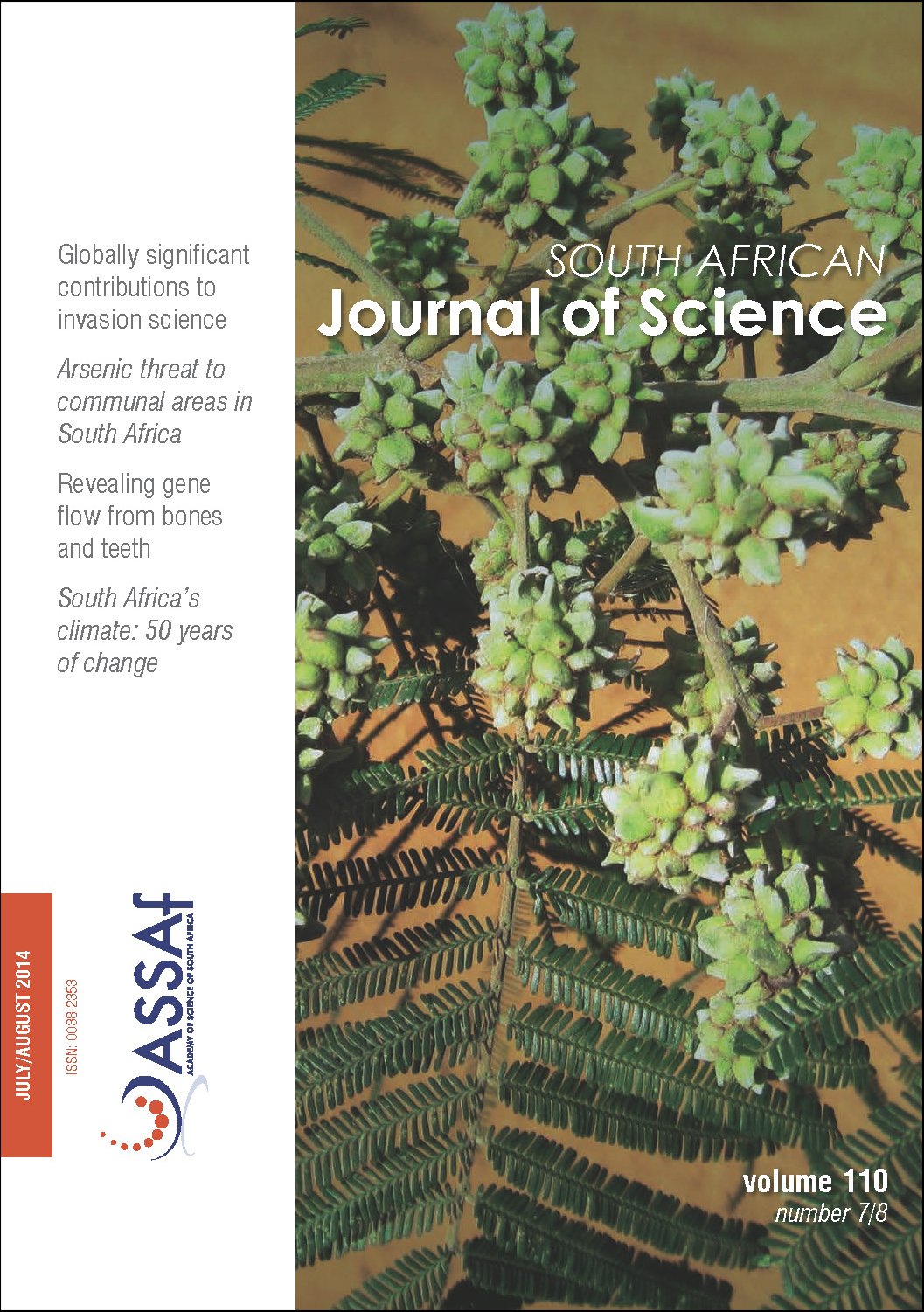Assessing leaf spectral properties of Phragmites australis impacted by acid mine drainage
DOI:
https://doi.org/10.1590/sajs.2014/20130184Keywords:
leaf spectra, mine water, chlorophyll red edge position, NDVI, field spectroscopyAbstract
The decanting of acid mine drainage (AMD) from the Western Basin on the Witwatersrand in late 2010 raised concerns about AMD risks in other gold, coal and copper mining areas of South Africa. Field spectroscopy and the use of vegetation indices could offer an affordable and easy means of monitoring the impact of mine water and/or AMD on vegetation. The impact of raw and treated mine water or contaminated soil on wetland vegetation often manifests in growth inhibition and reduction of foliar pigments and nutrient levels. Surveying the impact on wetland vegetation or underlying soils can be difficult and expensive considering the cost of laboratory analysis of samples. The potential of field spectroscopy for detecting the impact of mine water on wetland vegetation was examined by assessing (1) whether there was a significant difference in leaf spectra between sites receiving mine water and a non-impacted control site and (2) whether there was a gradation of vegetation condition downstream from the decanting site. Two vegetation indices were derived from portable field spectrometer-measured spectra of five green leaves of Phragmites australis – the chlorophyll red edge position (REP) and the normalised difference vegetation index (NDVI) – for two dormant (winter) and peak growth (summer) seasons in 2011–2012. Mean REP and NDVI values were significantly (p<0.05) lower for affected sites compared to the control site for both seasons and years. The range of REP values for young green leaves in winter for affected sites was 695–720 nm compared to the narrower range of 705–721 nm for the control site. The mean REP values for young green leaves in winter was 708 nm for the affected sites compared to 716 nm for the control site. The downstream gradation, however, fluctuated for REP and NDVI over the study period. We conclude that field spectroscopy shows potential to serve as a relatively quick and affordable means to assess the condition and health of vegetation affected by AMD.
Published
Issue
Section
License

This work is licensed under a Creative Commons Attribution 4.0 International License.

All articles are published under a Creative Commons Attribution 4.0 International Licence
Copyright is retained by the authors. Readers are welcome to reproduce, share and adapt the content without permission provided the source is attributed.
Disclaimer: The publisher and editors accept no responsibility for statements made by the authors
How to Cite
- Abstract 475
- PDF 481
- EPUB 191
- XML 207












.png)